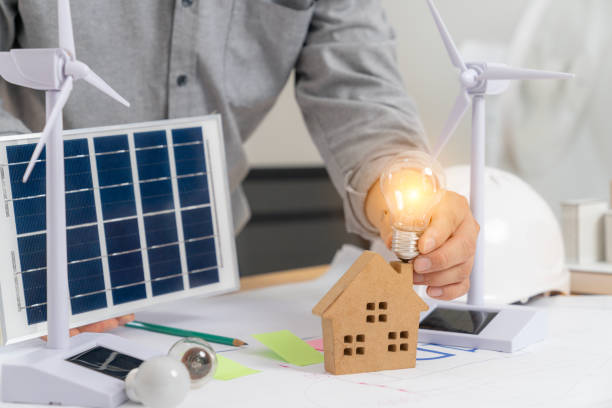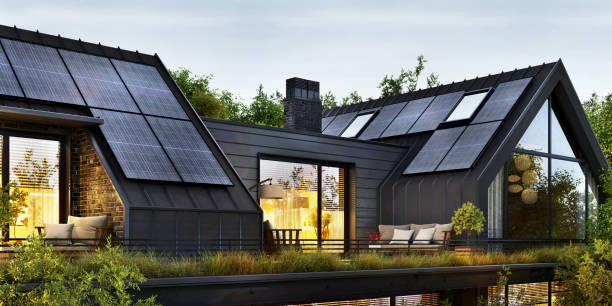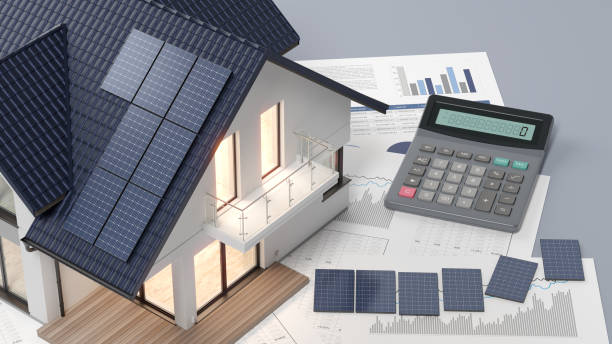Building an energy-efficient home is not just about saving money on energy bills; it’s also a commitment to sustainability and reducing environmental impact. Using the right materials, technology, and planning, your home can minimize energy consumption and provide maximum comfort and efficiency.
Discover valuable tips and techniques in this article for designing an energy-efficient home that cuts expenses and benefits the planet.
Cutting Down on Energy Bills by Using Green Building Materials
When building a new home or redesigning one with energy efficiency in mind, it’s essential to consider green building materials. These materials, such as bamboo, reclaimed wood, and recycled steel, are durable and environmentally friendly. Using the right materials helps reduce your carbon footprint and leads to significant long-term savings on energy costs.

Benefits of Green Building Materials
Green building materials are often better insulators, reducing the energy required to heat and cool your home. For instance, bamboo and reclaimed wood effectively provide thermal insulation, keeping indoor temperatures steady. Additionally, sourcing these materials locally reduces transportation-related energy consumption, further contributing to sustainability.
Incorporating these materials into your home can reduce your energy needs and utility bills. Additionally, homes built with eco-friendly materials tend to have a higher resale value because of their sustainability features.
Introduction of Renewable Energy Resources
One of the best ways to decrease dependence on fossil fuels is to use renewable energy, such as solar power. Solar energy is particularly popular because it can reduce electricity bills by up to 90%. Homes with solar panels can sometimes generate surplus electricity, which may be sold back to the grid.
Advantages of Solar Power
Although the initial cost of installing solar panels may be high, the long-term benefits, such as lower utility bills, increased property value, and a smaller carbon footprint, make it worthwhile. Solar power also provides a reliable energy source, especially in areas with abundant sunlight.
In addition to solar panels, consider integrating other renewable energy sources such as wind turbines or geothermal systems. These technologies can further enhance your home’s energy efficiency and sustainability.
Cost-Efficient Ways to Optimize Home Insulation
Proper insulation is one of the most effective strategies for reducing energy consumption. Good insulation minimizes heat loss during winter and keeps your home cool in summer, reducing the need for energy-intensive heating and cooling systems.
Types of Insulation
- Fiberglass Insulation: This is a cost-effective option commonly used in walls, attics, and floors. Fiberglass batts are easy to install and provide decent thermal resistance.
- Spray Foam Insulation: This high-end option offers superior insulation by sealing gaps and cracks that can lead to air leakage. It is particularly effective in areas prone to extreme weather conditions.
- Cellulose Insulation: Cellulose insulation, made from recycled paper products, is eco-friendly and delivers excellent thermal and soundproofing qualities.
Upgrading to high-quality insulation will make your living space more comfortable and lower your energy costs.
Replacing Old Appliances with Energy-Efficient Models
Upgrading to energy-efficient appliances is another critical step in building an energy-efficient home. Modern appliances, especially those with Energy Star certification, consume less electricity while delivering superior performance.
Benefits of Energy-Efficient Appliances
Appliances such as refrigerators, washing machines, and air conditioners are designed with advanced technology to optimize energy use. These appliances often have longer lifespans, reducing the need for frequent replacements.
For instance, replacing an old refrigerator with an Energy Star-certified model can save up to 15% on energy costs annually. Similarly, energy-efficient washing machines use less water and electricity, further contributing to savings.
Designing for Passive Solar Energy
Passive solar design is a cost-effective way to harness natural sunlight for heating and lighting your home. This design strategy involves orienting your home to maximize solar gain during winter and minimize it during summer.
Key Elements of Passive Solar Design
- Orientation: Position your home to face the sun during winter months to maximize natural heating.
- Thermal Mass: Use materials such as concrete or brick to absorb and store solar heat during the day and release it at night.
- Windows: Install energy-efficient windows with low-emissivity coatings to reduce heat loss and gain.
- Shading: Use overhangs, awnings, or landscaping to block excessive sunlight during summer.
Passive solar design reduces reliance on artificial heating and cooling systems, leading to lower energy bills and a more sustainable home.
Achieving an Ecological House: Aesthetic and Functional Form
Creating an energy-efficient home involves more than using eco-friendly materials and appliances. It also requires balancing aesthetics and functionality. When making design choices, homeowners must consider factors such as budget, climate, and personal preferences.
Balancing Sustainability and Comfort
While sustainable living is often associated with sacrifices, modern green home designs prove that efficiency and comfort coexist. For example, energy-efficient windows reduce heat loss and enhance natural lighting, creating a bright and inviting living space.
Additionally, integrating energy-efficient systems into your home can increase its overall value. Prospective buyers are often willing to pay a premium for homes with long-term energy savings and reduced environmental impact.
Smart Home Technology for Energy Efficiency
Smart home technology has revolutionized the way we manage energy consumption. Devices like smart thermostats, lighting systems, and energy monitors allow homeowners to control and optimize energy use in real-time.
Advantages of Smart Technology
- Smart Thermostats: These devices automatically adjust temperature settings based on your schedule and preferences, reducing energy waste.
- Smart Lighting: LED lights with smart controls can be programmed to turn on and off based on occupancy or natural light levels.
- Energy Monitors: These gadgets provide real-time data on energy consumption, helping homeowners identify areas for improvement.
By integrating smart technology into your home, you can achieve significant energy savings while enhancing convenience and comfort.
Landscaping for Energy Efficiency
The design of your home’s exterior can also impact its energy efficiency. Strategic landscaping can provide natural insulation and shading, reducing the need for artificial heating and cooling.
Energy-Efficient Landscaping Tips
- Planting Trees: Deciduous trees provide shade during summer and allow sunlight to penetrate during winter.
- Using Native Plants: Native plants require less water and maintenance, reducing the energy and resources needed for landscaping.
- Installing Green Roofs: Green roofs provide insulation and absorb heat, reducing indoor temperatures and energy consumption.
Landscaping enhances your home’s aesthetic appeal and contributes to a more sustainable living environment.

Conclusion
Constructing an energy-efficient home is a worthwhile investment that benefits your wallet and the environment. You can significantly reduce energy consumption and costs by using green building materials, optimizing insulation, incorporating renewable energy systems, and upgrading to energy-efficient appliances.
Smart home technology and energy-efficient landscaping further enhance your home’s sustainability and comfort. With careful planning and thoughtful design, you can create a home that meets your needs and supports a greener future.
Remember, building an energy-efficient home is not just about saving money—it’s about positively impacting the planet. Adopting these strategies allows you to enjoy a comfortable, cost-effective, and environmentally friendly living space for years.

